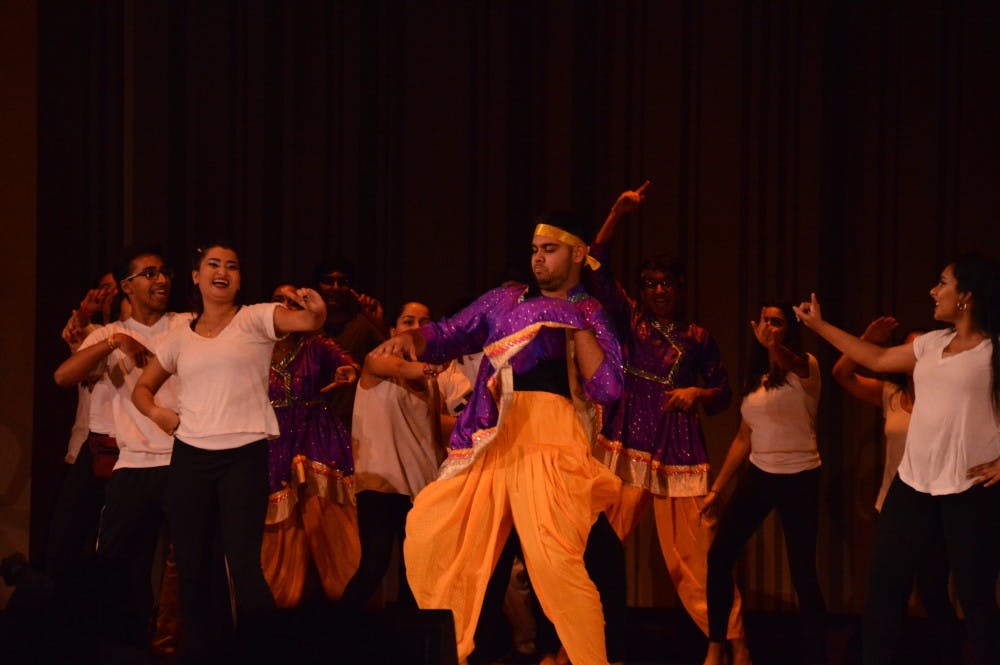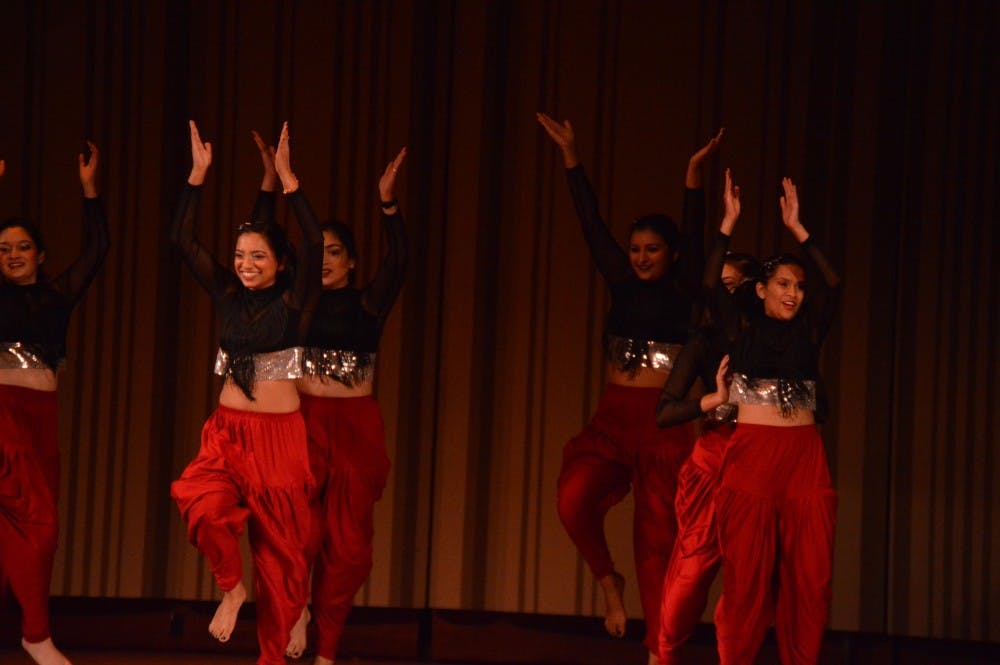The time was October 27th, Saturday night. The place, Irvine Auditorium. The crowd, a swirling mass of traditional Indian dress: cream tunics and long pants on guys, saris in gold and green and all that glitters on girls. The show itself? "SAS Presents: Friends – The Cultural Show," a celebration of Indian culture in the form of music and dance. Here are some of the highlights:
First to take the stage was Penn Raas, Penn's premier Garba–Raas team. Theirs was a show of loud purple tops and swishing gold sequins. In tandem with the kick of their legs and the step of their feet were twirling sticks in both palms, blurred with speed and gestured in unison. In short, a worthy show to kick off the night.
Bringing some girl–power to the stage, PENNaach, Penn's all–female South Asian fusion dance troupe since 1997, was a breath of fresh air. Dressed in black tops with gold sashes and loose red bottoms, their performance was one of coordinated technique. Moves like cartwheels and cheerleading throws reminiscent of the "helicopter" added spice to top off cohesive choreography. From the jaunt of their chins, the swish of their shoulders, and the twist of folded palms against popped out hips—there was a stage presence that drew many smiles from the audience.

Also known as "the army," Penn Masti, a co–ed fusion dance team and the largest group in the show, was on par with, if not even better, than PENNaach. Their performance, though an eclectic blend of styles, was welded in smooth transition. There was consistency in quality. Always the upturned toes, the slightly bent knees, and out–turned feet. Bare feet stepped in unison and legs kicked with nothing held back. There was coordination of movement to music. When dancers who were stooped low snapped straight just as those who had jumped high landed right on the beat drop, it was a sight to behold. Masti was a sea of red and black; their strength was not just in numbers, but in a performance well–done.

Penn Thillana, Penn's classical Indian dance team, was a devil for the details. Clean and coordinated, their traditional dress complemented the variation in their hands. Be it clenched back fingers with spread open palms raised above their heads, or fingers fanned out as an elegant extension of the arm, their sophisticated movements were surprisingly at home against a hip–hop beat. Though the music was fast, Thillana's impression on the audience lingered.
Penn Dhamaka, Penn's all–male Fusion dance team, has a reputation that precedes them. Judging on the cheers from their introduction alone, they had the most to impress, and impress they did. With uniform dance, stellar technique, and skilled use of stage lighting and music to complement their choreography, the troupe was as loud and flashy as their red and gold sequined tunics. With heat, humor, and a quirky attitude, they hyped up the crowd—they had it all. If the word "obnoxious" was ever a good thing, Dhamaka would have fit the bill.

The senior dance, the finale, was a free for all. It was not a cohesive act, no doubt because it was never meant to be. As a celebration of their last year at Penn, the seniors crammed onstage for one last performance: an unorganized, unrestrained, unapologetic homage to their time within Penn's South Asian community. Dance troupes crowded in front of the auditorium, their hands reached out to the seniors onstage. Even as an outsider, their cheers drew a smile across my face.
Between the emcees rife with inside jokes that drew whoops and cheers from the audience, the spontaneous "Happy Birthday" song for a member of the show, and an auditorium crowded with friends and family alike, the SAS cultural show had an atmosphere reminiscent of family. It was less a formal professional showing of skill and more a gathering of common culture—not to discredit the immense talent that was exhibited. It was a warm beacon on a chilly October night.

